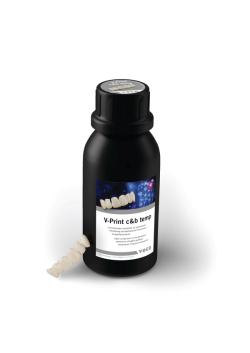- About Us
- Advertise
- Editorial
- Contact Us
- Terms and Conditions
- Privacy Policy
- Do Not Sell My Personal Information
© 2025 MJH Life Sciences™ and Dental Products Report. All rights reserved.
5 tips for ideal resin cement selection
One clinician discusses techniques for optimal dental cement selection.
Dental cements and the cementation process are integral components of indirect restorations. However, it’s easy to overlook the basics if we don’t examine cement selection and cementation processes.
Related article: 10 common direct dentistry mistakes to avoid
These five tips are aimed at helping dental professionals evaluate their selection processes and identify the best cement for each clinical situation.
Continue to the next page to learn more.
1. Stay up to date on which cements are available.
Resin cements may be supplied as one or two pastes, may be light cured, dual cured or chemical cured, and may three bonding mechanisms:
- Total-etch, which requires etching of the tooth followed by an application of a bonding agent;
- Self-etch, which requires application of a self-etching adhesive to prepare the tooth surface prior to applying the cement;
- Self-adhesive, which doesn’t require any bonding agent application to the tooth or restorative material.
Trending article: The state of dental implants in 2017
Of these three classifications, total-etch cements usually provide the highest bond strength, but the process is complex and has many steps. These steps require etching, rinsing and bonding. During this time, saliva contamination may occur, which lowers the desired bond of the cement to the prepared tooth. Self-etching cements have slightly reduced strength compared to total-etch and require fewer steps, while self-adhesive cements have further reduced bond strength, but are the easiest to apply.
All three types of resin cements provide greater retention than any other cement, achieving the highest possible bond to enamel and the most stable esthetic results.
2. Consider your restorative material and the prep.
There are plenty of things to keep in mind when selecting the right cement for a restoration. It is crucial that clinicians review these factors and be able to identify solutions.
Different procedures often call for different cements. For example, a self-adhesive resin cement like 3M™ RelyX™ Unicem 2 is favorable when the preparations are long and parallel - especially single units. In other cases, clinical literature supports the use of resin-modified glass ionomer cements when single-unit zirconia crowns are cemented, especially when the preparation occlusal reduction is adequate. If the preparation is minimal, the restoration should be bonded.
Read more: 5 ways your composite choice may be costing you money - and making your patients unhappy
Another procedural concern is whether to bond or cement. If preparations are long (4mm or more) with parallel walls, then the case can be cemented. With tapered preparations, long spans or restorations that are thin due to inadequate occlusal reduction, bonding is the best solution to these clinical situations - especially with all-ceramic units.
Monolithic zirconia is a very popular option for restorations because it is resistant to chips and fractures and results in minimal wear to opposing teeth. However, light does not effectively penetrate the zirconia and a dual- or chemically-cured cement is often required to bond the restoration to the preparation. Materials that contain the 10-MDP-like monomer preceded with abrasion of the intaglio surface of the restoration (30µm, 30psi, 10 sec) achieve a durable, clinically effective bond to traditional zirconia and the prepared tooth.
Always consider the function of the restoration. For a bruxer or an athlete (i.e. a boxer or hockey player), the strongest possible cement is best (total-etch). For tapered preparations, thin ceramic restorations and restorations that require extra retention, total-etch or self-etch resin cements should be considered. If isolation is impossible, then self-adhesive resin cements should be selected to reduce the potential for contamination.
3. Be mindful of your product and your costs.
Are you concerned that your cement’s delivery method is wasting time and material? Then look for easy-mix cement options with a two-barrel syringe and mixing tip, which allows you to inject the mixed cement directly into the prosthesis with little waste, especially with the smaller mixing tips.
Trending news: Dental care, south of the border
Another thing to keep in mind is how you prefer to mix your cements. Hand mixing is less expensive than automix, but automixing is much faster. In my opinion, the speed that automix provides is much more convenient and pays for itself through reduced chair time.
4. Don’t forget about esthetics.
Many restorations require superb esthetics. In these cases, it is extremely important to consider the color you are trying to achieve. Look for esthetic resin composite cements that are supplied in multiple shades and viscosities and have try-in pastes that match the cured cement color.
With anterior, all-ceramic restorations and translucent restorations (especially with lithium disilicate and feldspathetic porcelain) a light-cured cement should be selected because light-cured materials are the most color stable cements on the market. Traditional dual-cured resin cements discolor with time due to the amine, but newer dual-cured cements have removed the amine, creating cements that are more color stable.
Related reading: 5 ways new bulk fills are providing better results
Try-in pastes give clinicians the ability to alter the final color of a veneer or translucent crown slightly to improve the color match of the final restoration. First, the paste is applied to the restoration and seated on the tooth. If the restoration with the try-in paste matches the adjacent teeth, then use the cement shade that matches the try-in paste. If not, apply a different try-in paste shade to improve the color match of the final restoration. When the best match is achieved, use that shade of cement to obtain the best result. Try-in pastes are water soluble and rinsing them with water ensures that there is no interference with bonding the restoration to the preparation.
5. Read the directions.
It sounds obvious, but manufacturer guidelines on how to use the cement are important. Often, a product won’t work as well as it could if the instructions are not followed.
Emerging research: Are dentists causing a deadly infection in patients?
Even if you have used a similar product in the past, or you have used a product from the same manufacturer, there’s a chance the directions might be different or updated. It never hurts to glance at the guidelines and make sure you are doing what you can so that your cement operates to its full potential. Most manufacturers recommend storing dual or chemical cure cements at room temperature. Do not store in sunlight or near a heater.
Also, be sure to check the expiration date of the cement and the proper storage conditions as outlined by the manufacturer to maximize shelf life.
For more information on dental cements, visit 3M.com.



